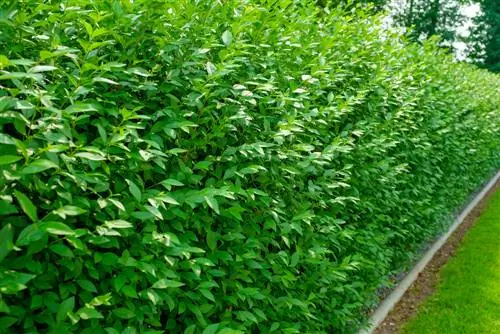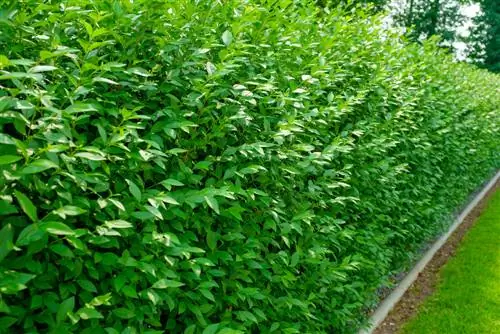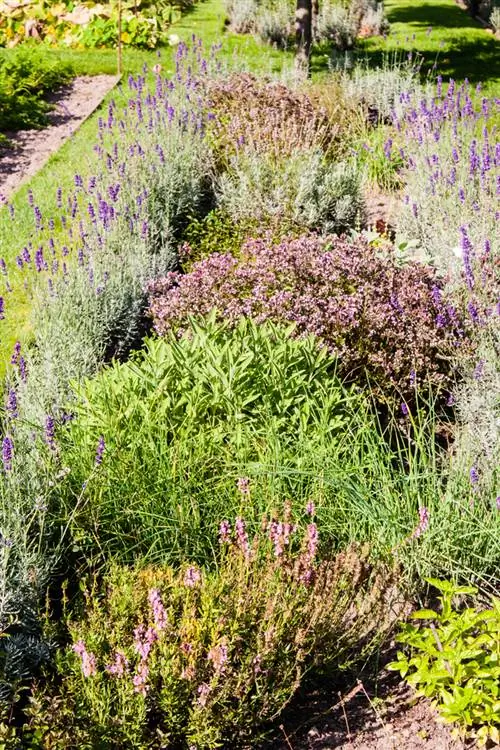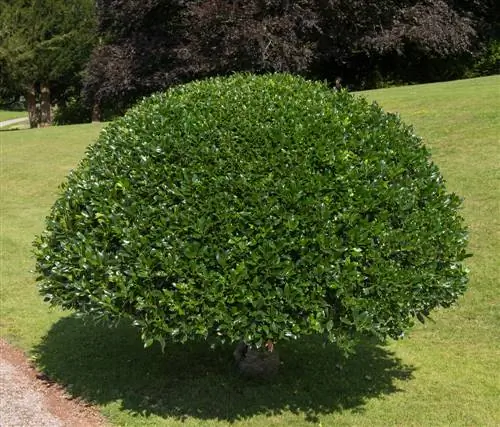- Author admin [email protected].
- Public 2023-12-16 16:46.
- Last modified 2025-01-23 11:22.
The Asian giant grass bamboo can be used in many ways in the garden, for example as a privacy screen or even as a hedge. However, many types of bamboo have serious disadvantages, which is why an alternative is sought. In the following article we will introduce you to the most beautiful replacement plants.

Which plants are good alternatives to bamboo?
Fargesia species, miscanthus, pampas grass, tall pipe grass, evergreen trees such as conifers, cherry laurel, privet, boxwood, evergreen honeysuckle, rhododendron, holly and evergreen barberry are suitable alternatives to bamboo. These plants are versatile and perform similar functions to bamboo in the garden.
Is there any bamboo that does not develop runners?
The problem with many species of bamboo is their strong runner formation. These species develop numerous rhizomes through which they spread dramatically - unless their growth is stopped from the outset by barriers. If this is your problem with bamboo, you can simply plant Fargesia species. Fargesia, such as the umbrella bamboo Fargesia rufa or Fargesia murielae,
- do not form any runners
- grow, depending on the variety, up to 300 centimeters high and very dense
- are hardy
- evergreen
- strong growth
- very easy to cut
Therefore, Fargesia bamboo is often used for bamboo hedges.
What alternatives are there to bamboo?
If you are looking for an alternative to bamboo, you could first look at other grasses. After all, bamboo is also a grass. Possible species are, for example,
- Miscanthus giganteus or sinensis: impressive growth, up to 300 centimeters high, for sunny locations, forms a few runners
- Pampas grass (Cortaderia selloana): impressive, clumpy growth, flower spikes up to 250 centimeters high
- Tall pipe grass (Molinia arundinacea): also giant pipe grass, up to 200 centimeters high, clumpy growth with fine stalks
The species mentioned are not always green, but only wintergreen.
Are there also bamboo alternatives that are evergreen?
Instead of other grasses, you can of course also consider evergreen trees as an alternative. For example,would be conceivable
- Conifers such as yew, thuja, cypress
- Cherry Laurel
- Privet
- Boxwood
- Evergreen Honeysuckle
- Rhododendron
- Holly
- Evergreen Barberry
The species mentioned are very suitable for hedges, but can also be planted singly or in small groups as privacy screens. Please note that all plants have different needs in terms of location, soil and care. While yew, boxwood and rhododendron, for example, are quite tolerant of shade, the evergreen honeysuckle belongs in a rather sunny to partially shaded location.
Which substitute plants grow particularly densely and tall?
If, on the other hand, you are looking for particularly tall and densely growing alternatives to bamboo, you have a large selection of shrubs and perennials. Something likewould be conceivable
- Ferns such as worm fern or royal fern
- tall-growing flowering perennials such as larkspur, phlox, astilbe, daisies, golden balm
- hydrangeas
- Snowball
- Wild trees such as cornelian cherry, serviceberry, blackthorn, hawthorn, elderberry, dogwood
- Lilac
- Hazelnut
- wicker
Here, too, the requirements of the individual species differ greatly in terms of location and care. Which alternative you choose also depends on the intended use: For a hedge, plants have to meet different conditions than, for example, for cultivation in a pot.
Tip
Taming bamboo with a rhizome barrier
Highly overgrown bamboo species can often be tamed with a rhizome barrier (€78.00 at Amazon). To do this, plant the bamboo, for example, in a sufficiently large masonry pot or another robust option (preferably solid plastic, concrete or metal). Make sure that the rhizome barrier protrudes slightly above ground so that the rhizomes do not seek this route.






